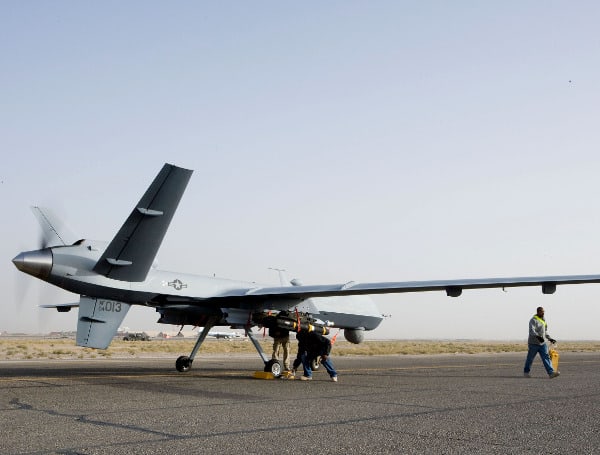A top US military official and the military wing of the Iran-backed Houthi rebel group in Yemen confirm that the rebels shot down a US drone today.
The MQ-9 Reaper drone, according to the Houthis, was shot down by air defenses while it was in Yemeni airspace.
Senior US military officials are still reviewing the incident, including whether the drone was over Yemen or in international airspace. They made this claim while anonymously speaking about details that have not been made public.
Read: U.S. Nuclear Submarine Arrives In Middle East As Russia Test Fires ICBM From New Sub
According to the Houthis, since October 7, at least four batches of drones and missiles have been fired toward southern Israel.
The group controls the capital and much of northern and western Yemen, where the majority of the country’s population lives.
About the MQ-9 Reaper Drone
The Reaper is employed primarily as an intelligence-collection asset and secondarily against dynamic execution targets.
Given its significant loiter time, wide-range sensors, multi-mode communications suite, and precision weapons, it provides a unique capability to perform strike, coordination, and reconnaissance against high-value, fleeting, and time-sensitive targets.
Reapers can also perform the following missions and tasks: intelligence, surveillance and reconnaissance, close air support, combat search and rescue, precision strike, buddy-lase, convoy and raid overwatch, route clearance, target development, and terminal air guidance. The MQ-9’s capabilities make it uniquely qualified to conduct irregular warfare operations in support of combatant commander objectives.
Read: Florida Gov. DeSantis Applauds Swift Action On Iran Sanctions, Jewish Schools Protections
Features
The Reaper is part of a remotely piloted aircraft system. A fully operational system consists of sensor and weapon-equipped aircraft, ground control station, Predator Primary Satellite Link and spare equipment along with operations and maintenance crews for deployed 24-hour missions.
The basic crew consists of a rated pilot to control the aircraft and command the mission, and an enlisted aircrew member to operate sensors and guide weapons. To meet combatant commanders’ requirements, the Reaper delivers tailored capabilities using mission kits containing various weapons and sensor payload combinations.
The MQ-9 baseline system carries the Multi-Spectral Targeting System, which has a robust suite of visual sensors for targeting. The MTS-B integrates an infrared sensor, color, monochrome daylight TV camera, shortwave infrared camera, laser designator, and laser illuminator. The full-motion video from each of the imaging sensors can be viewed as separate video streams or fused.
The unit also incorporates a laser rangefinder/designator, which precisely designates targets for employment of laser-guided munitions, such as the Guided Bomb Unit-12 Paveway II. The Reaper is also equipped with a synthetic aperture radar. The MQ-9 can also employ up to eight laser-guided missiles, Air-to-Ground Missile-114 Hellfire, which possess highly accurate, low-collateral damage, anti-armor and anti-personnel engagement capabilities.
The remotely piloted aircraft can be disassembled and loaded into a single container for deployment worldwide. The entire system can be transported in the C-130 Hercules or larger aircraft. The MQ-9 aircraft operates from standard U.S. airfields with clear line-of-sight to the ground data terminal antenna, which provides line-of-sight communications for takeoff and landing. The PPSL provides over-the-horizon communications for the aircraft and sensors.
The MQ-9 has also been modified for extended range operations through the addition of external fuel tanks capable of holding 1,300 lbs of fuel. This provides for greater on station time and further range. The modification also adds an extra blade to the propeller and an alcohol-water injection system to improve takeoff performance.
The primary concept of operations, remote split operations, employs a launch-and-recovery ground control station for take-off and landing operations at the forward operating location, while the crew based in continental United States executes command and control of the remainder of the mission via beyond-line-of-sight links. Remote split operations result in a smaller number of personnel deployed to a forward location, consolidates control of the different flights to stateside locations, and as such, simplifies command and control functions as well as the logistical supply challenges for the weapons system.
Android Users, Click To Download The Free Press App And Never Miss A Story. Follow Us On Facebook and Twitter. Signup for our free newsletter.
We can’t do this without your help; visit our GiveSendGo page and donate any dollar amount; every penny helps
